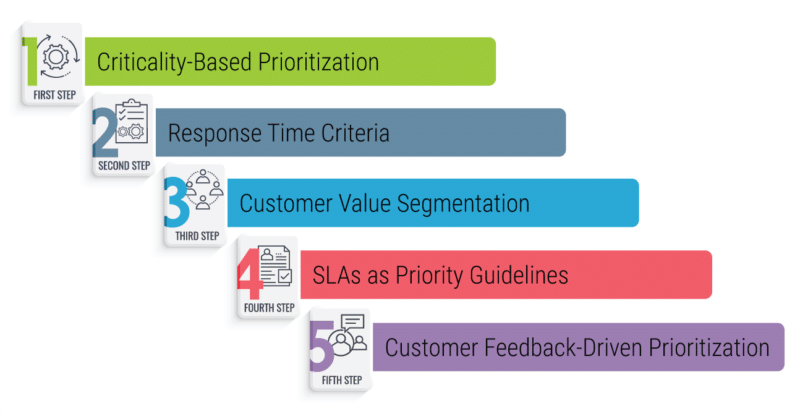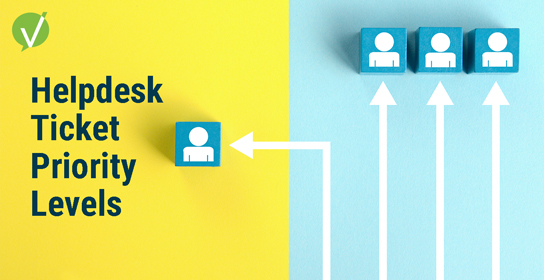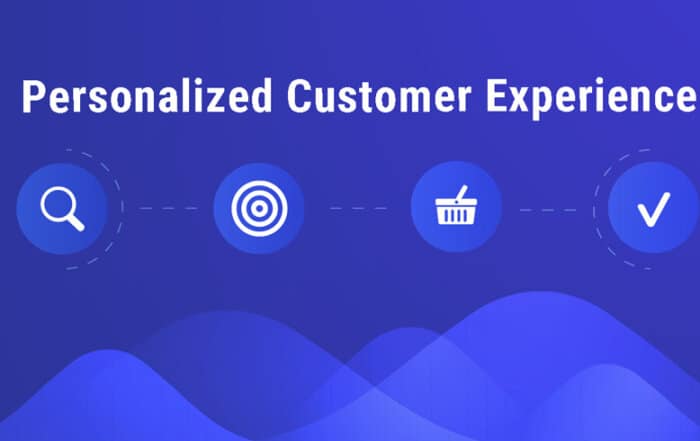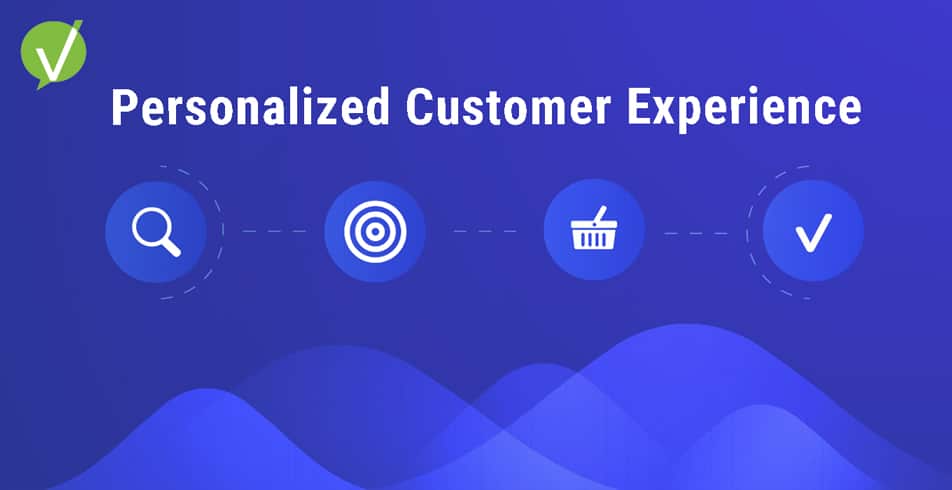Helpdesk Ticket Priority Levels: The Ultimate Guide to Optimal Support
Introduction
Things You Will Learn in This Article:
- Understanding the Significance of Helpdesk Ticket Priority Levels
- Uncover the Vital Components to a Strong Service Level Agreement
- Exploring Effective Helpdesk Ticket Prioritization Strategies
Helpdesk ticket priority levels come into play when you’re part of a customer support team and you understand not all support requests are created equal. Some require immediate attention, while others can wait. But how do you ensure your team is addressing critical issues promptly and efficiently, without overlooking less urgent ones?
In this article, you will learn about the significance of helpdesk ticket priority levels in maintaining efficient customer support. Discover five effective methods to define priority levels and ensure timely issue resolution. Explore strategies based on criticality, response times, customer value, SLAs, and customer feedback.
By implementing appropriate helpdesk ticket priority levels, you can enhance team urgency, automate workflows, and deliver exceptional customer experiences, effectively answering the vital question of how to balance ticket handling for optimal support.
Understanding the Significance of Helpdesk Ticket Priority Levels
Picture this: Your support team receives a flood of incoming tickets. Some are simple inquiries, while others are urgent problems affecting important customers. Without a clear system in place to prioritize these tickets, chaos ensues. You risk overlooking high-priority issues, causing customer frustration, missed Service Level Agreements, and decreased satisfaction.
If you have this pain point, then you know how critical it is to have a well-defined customer service ticketing system for superior customer support system for ticket prioritization. The good news is that setting up effective helpdesk ticket priority levels can turn things around.
Five Effective Methods to Define Helpdesk Priority Levels
- Criticality-Based Prioritization: Learn how to identify critical issues that require immediate attention and distinguish them from routine queries. Imagine you’re using a SaaS platform for project management, and a critical bug prevents users from accessing their data. Identifying this issue as critical means your support team would address it immediately, while a less critical query, such as a feature request, might be handled during regular working hours.
- Response Time Criteria: Explore the importance of setting response time targets for different ticket priorities, ensuring customers receive timely updates. Let’s say you’re using a SaaS email marketing tool, and you’ve encountered an issue with campaign scheduling. Setting response time criteria ensures that high-priority tickets, like a campaign failure just before a major product launch, receive a response within minutes, while lower-priority inquiries might have a response time target of a few hours.
- Customer Value Segmentation: Discover how to prioritize tickets based on the value of the customer, enhancing support for your most important clients. In the context of a SaaS CRM, consider a high-value enterprise client with a large subscription and a small startup on a free plan. Prioritizing the high-value customer’s support requests ensures their business-critical issues are resolved promptly, while the startup’s non-urgent questions might have a slightly longer response time.
- SLAs as Priority Guidelines: Understand the role of Service Level Agreements (SLAs) in setting priority levels aligned with business goals. Suppose you’re using a SaaS helpdesk software with various SLAs for different subscription tiers. These SLAs can set priority levels aligned with business goals. For instance, a premium support plan might guarantee 24/7 availability and faster response times, giving high priority to subscribers on that plan.
- Customer Feedback-Driven Prioritization: Harness the power of customer feedback and satisfaction scores to fine-tune your ticket prioritization strategy. Imagine you’re the product manager for a SaaS collaboration tool. By closely monitoring customer feedback and satisfaction scores, you identify recurring issues causing frustration among users. You can prioritize these issues for resolution to improve user experience, even if they aren’t classified as critical in traditional terms.
By implementing these methods, you can enhance team urgency, automate workflows, and deliver exceptional customer experiences.

Exploring Effective Helpdesk Ticket Prioritization Strategies
- Enhancing Response Times through Automated Priority ManagementPicture a scenario where your support team doesn’t need to spend precious time manually assigning priority levels to tickets. With customer service automation, this scenario becomes a reality. Discover how technology can be harnessed to ensure that critical issues receive swift attention.
- Efficiency Gains: By implementing automation, you’ll say goodbye to the time-consuming task of manually assigning priority levels to tickets. This means less time spent on administrative duties and more dedicated to addressing critical issues swiftly.
- Automation Benefits: Upon adoption, you’ll experience reduced response times and increased accuracy in identifying critical issues. Your workflows will become more streamlined, resulting in quicker issue resolution and improved support efficiency.
- Enhanced Customer Service: Implementing automation will lead to enhanced customer service. Critical issues will be tackled promptly, leading to higher customer satisfaction and an overall improvement in the support experience you offer.
- Time-Saving Strategies: These strategies will save you valuable time and resources, making your team more efficient and productive in the long run.
- Leveraging Customer Value for PrioritizationRecognize that not all customers are identical. Delve into the art of customizing your support approach based on the value each customer brings, offering exceptional service where it matters most.
- Solve Resource Allocation Challenges: By segmenting customers based on their value, you’ll effectively allocate your support resources, ensuring that your team focuses where it matters most, ultimately streamlining your support operations.
- Optimize Customer Satisfaction: Tailoring your support approach to different customer segments will lead to increased customer satisfaction. Happy customers are more likely to stay loyal and recommend your business.
- Increase Revenue Potential: Offering exceptional service to high-value customers can result in increased sales and revenue. These customers are more likely to make repeat purchases and become brand advocates.
- Enhance Operational Efficiency: Implementing customized support strategies allows for efficient resource management, potentially reducing costs and increasing your support team’s productivity.
- Strengthen Customer Relationships: Recognizing and valuing each customer’s uniqueness through customized support can lead to stronger, more meaningful customer relationships, fostering trust and loyalty.
- Aligning Helpdesk Priority Levels with SLAs and Business ObjectivesService Level Agreements (SLAs) are more than mere contracts; they are powerful instruments for establishing priority levels that harmonize with your business objectives. Learn how to harness the potential of SLAs to your advantage.
- Streamlined Prioritization: By utilizing SLAs strategically, you’ll streamline the process of assigning priority levels to support requests. This will ensure that critical issues are addressed promptly and efficiently.
- Aligned Business Objectives: Implementing SLAs effectively means that your support priorities will align perfectly with your business objectives. This alignment will result in a more cohesive and focused approach to customer support.
- Enhanced Customer Satisfaction: As a result of well-aligned SLAs, you’ll provide a more consistent and reliable support experience to your customers. This, in turn, will lead to increased customer satisfaction and loyalty.
- Improved Accountability: SLAs create a framework for accountability within your support team. By implementing them, you’ll establish clear expectations and responsibilities, reducing confusion and ensuring everyone is on the same page.
- Efficiency Boost: The strategic use of SLAs are, once again, another strategy to increase efficiency in your support processes. With priority levels clearly defined, your team can work more efficiently, resolving issues faster and more effectively.
- Data-Driven Decision-Making: SLA reporting [link to SLA reporting blog] provides a wealth of data on support response times and issue resolution. You’ll gain valuable insights that can be used for data-driven decision-making, allowing you to continuously improve your support operations.
- Effective Resource Allocation: Implementing SLAs will help you allocate your support resources more effectively. You’ll know where to focus your efforts, ensuring that critical issues receive the attention they deserve.
- Reduced Workload: With clear priority levels established through SLAs, your team will no longer need to spend excessive time deciding which issues to address first. This will reduce their workload and allow them to work more efficiently.
- Mitigated Risk: SLAs can help you identify potential risks in your support operations and address them proactively. By implementing this strategy, you’ll minimize the risk of critical issues going unaddressed.
- Prioritizing Tickets Using Customer Feedback and SatisfactionYour customers’ voices hold significant weight. Investigate how feedback and satisfaction scores can serve as compass points for refining your prioritization strategy, ultimately leading to increased customer happiness.
- Precise Prioritization: Customer feedback and satisfaction scores offer valuable insights into which issues are most critical to your users. This precision in prioritization ensures that you allocate resources where they are needed most.
- Proactive Issue Prevention: By analyzing feedback data, you can identify recurring issues and take proactive steps to prevent them. This reduces the likelihood of similar problems arising in the future.
- Data-Backed Decision-Making: Your prioritization strategy will become more data-driven, allowing you to make informed decisions based on the feedback trends and satisfaction scores of your customers.
Don’t let chaotic ticket management affect response times and customer satisfaction. Learn the strategies, embrace automation, and enhance your team’s efficiency for optimal support delivery.
For more than two decades, Vivantio has been helping clients implement the best practices for helpdesk ticket priority levels and improve your team’s efficiency. To find out how Vivantio can help you improve helpdesk priority levels, contact our team today or register for a free demo.













